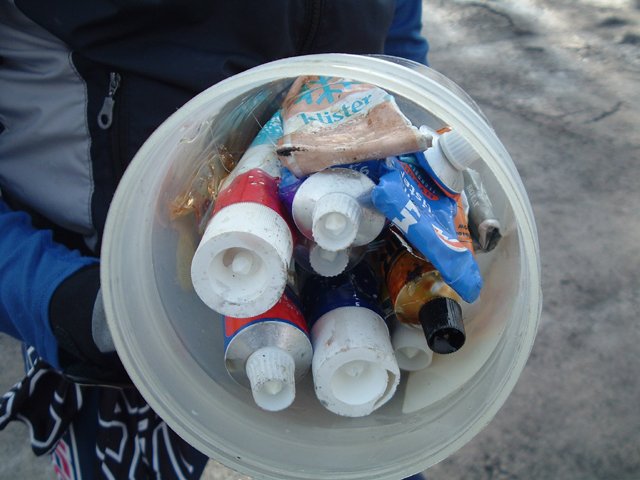Questions #3 - What is the best base binder and how do you decide on klister or regular binder? And what is the point of covering with hard wax?
Also, how do you prepare or know the right wax to use all the time . . . are you going by logs and experience? I suppose you need to understand the snow structure, humidity, temp of snow, etc. Not all of that is available on the Gats web site, which is why I like your teams report. Hopefully I can learn to be a more effective skier.
Regards - D.M.

Everybody loves klister, right?
When to use regular wax, binder or klister and how to decide?
Binder is needed when the snow is old and abbrassive or icy, but not so icy that you can use straight klister without ice forming on your wax.
Binder helps keep the wax from wearing off your skis and may be one of the following:
- regular wax heated into the base,
- a special binder (very thick sticky) kick wax in a regular can,
- klister - in some situations.
Binders are always heated into the base so that they adhere better. Then you should allow them to cool before applying more wax for the day's conditions.
Usually when new dry snow gets cold quickly the snow crystals stay sharp and abbrassive like sand paper. In these conditions, regular kick wax will work, but may wear off your skis. Here the solution is to iron in 1-2 layers of the "wax du jour" which will be green or blue. This will usualy suffice for 15-20km. If you are skiing 50km then you should consider special binder wax. Every company makes one, and they are rather inexpensive for the improved skiing experience you'll have when you can still stide uphill long after your friends have stopped to re-wax.
When binder really becomes important is after a thaw-freeze and the tracks get icy. We're blessed with excellent grooming in the Gatineau park, and after all the rain we've had it's amazing that they can till the ice into a softer surface. But often those little chunks of ice that have been pressed into a track are quite abbrassive, and quickly tear the wax off your skis. This is the time when either regular binder or klister needs to be applied. The line between which to use isn't clear cut. Just a week ago a lot of XC Ottawa was skiing on Teho green (a binder), while others were on klister. You have to decide based on just how icy the track is. The icier it is the more you should think about klister. If it's really and fast icy, then klister for sure.
Covering Klister with Hard Wax
Now the worst of scenarios: ice covered with a thin layer of new dry snow or big chunks of ice mixed/covered with a little new snow.
(These are the days for which skating was likely invented!) The trick here is to wax for both the ice
and the new snow.
- Apply a thin layer of klister as a binder, heat it in with either an iron, a torch, a heat gun or a blow drier. Use the palm of your hand or thumb to smooth the klister.
- Allow the klister to freeze thoroughly by putting your skis outside or above (but not touching) the snow (the klister should be tacky, but not runny)
- Crayon hard wax on top of the klister (this helps prevent the klister from icing up due to the new snow). Use thin layers, smoothing them out gently with a cork. Gently means you are not corking hard enough to heat any of the klister so that it mixes with the covering hard wax. You want to apply just enough hard wax to completely cover the klister...otherwise it will grab that fresh snow.
Klister covered with hard wax is a tricky art to learn. The reason for this is that ice and fresh snow will often be mixed together a different temperature! You might need blue klister as a base at -10°C and colder, violet from -5°C to -10°C, and red klister near 0°C. But the principle is the same; apply klister, freeze the klister, and then cover the klister without mixing. Follow those simple rules and hopefully you get glide, grip that lasts and doesn't drag or ice up.
How to know the wax of the day?
That comes with experience, trial and error, reading, and recording your successes and failures really helps. Waxing is an art you must practice.


